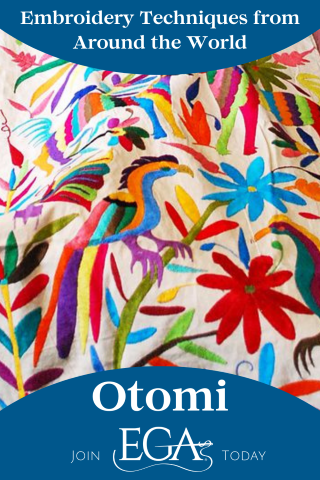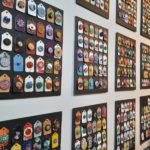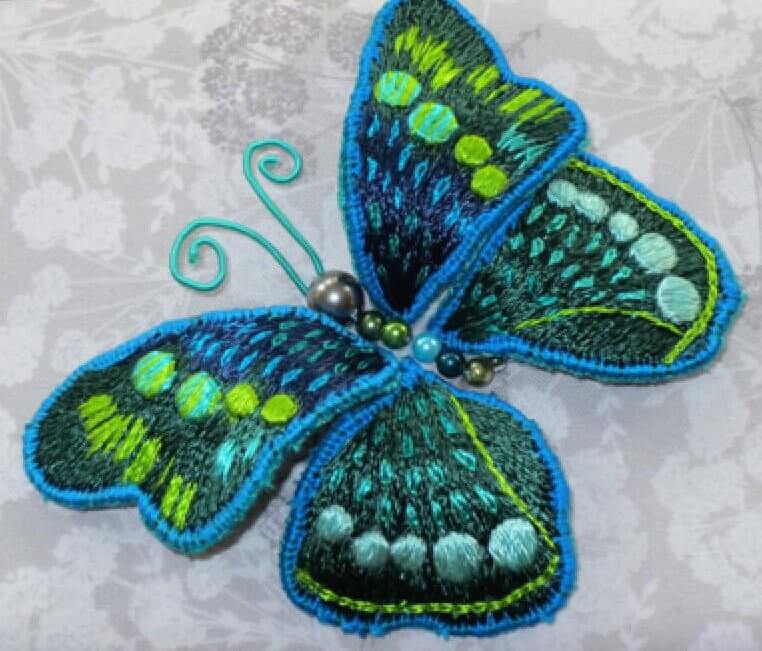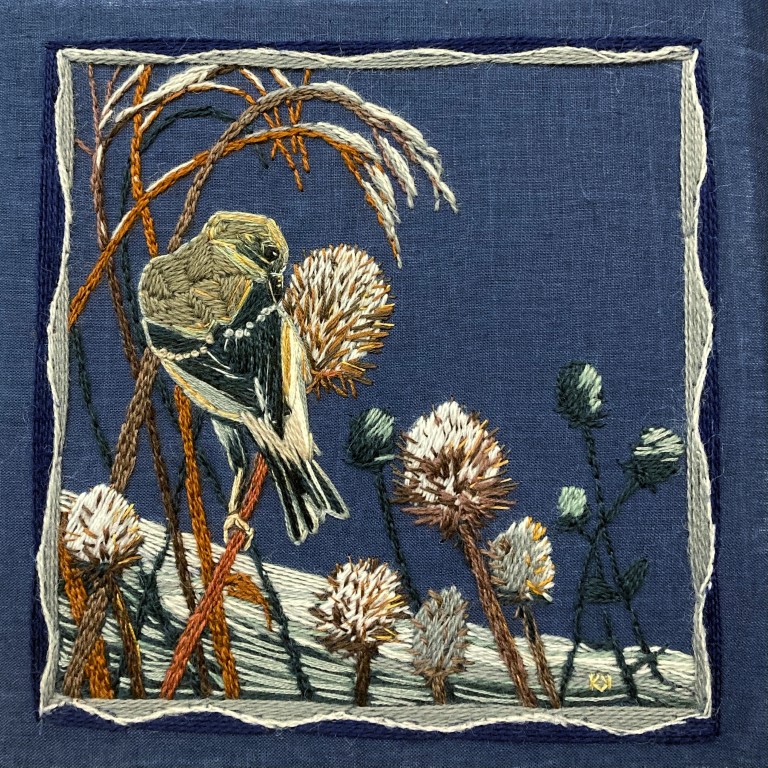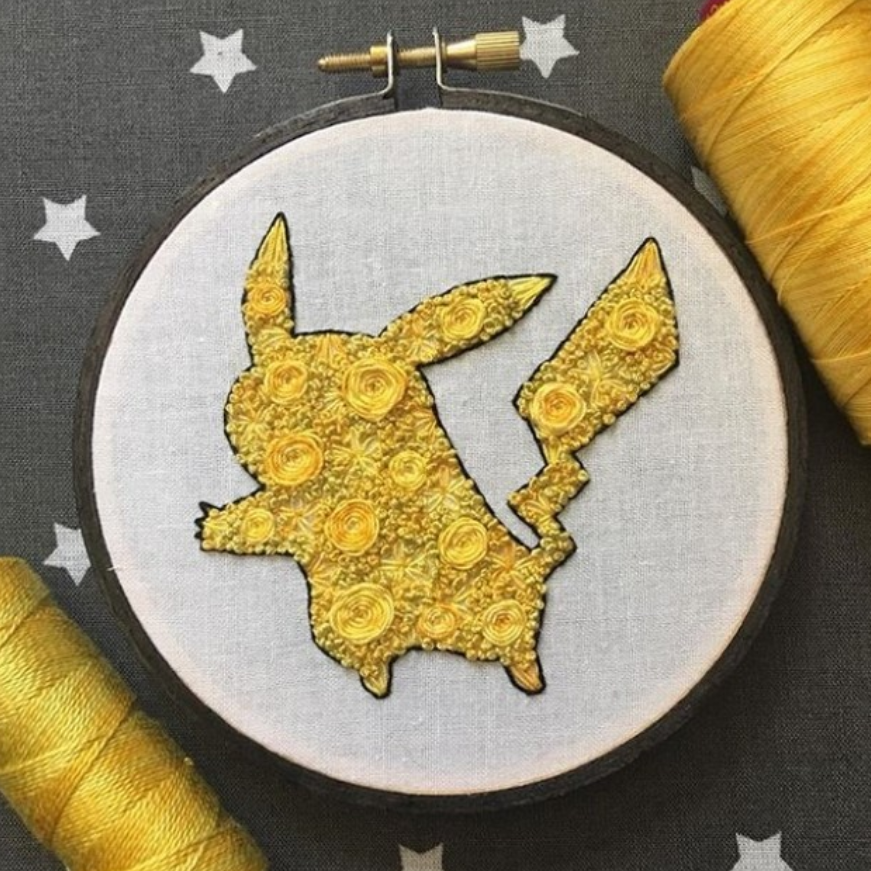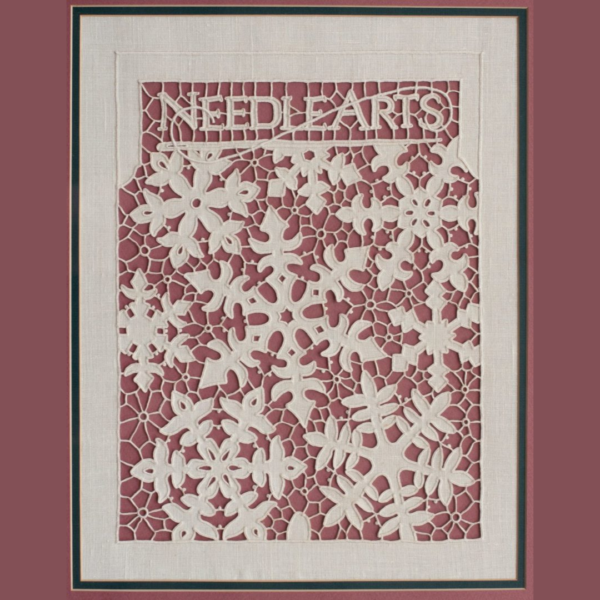Technique: Otomi
Place of Origin: Central Mexico
Earliest known date: Pre-Columbian era
History: Otomi embroidery, the modern version of which is referred to as “tenangos,” (derived from the Nahuatl word for “place of walls” or “a stone neighborhood”) is a rich textile art that dates back centuries.
While it is difficult to pinpoint an exact timeframe, this embroidery style is rooted in the pre-Hispanic period of Mesoamerica. Otomi embroidery originated among the Otomi people. The Otomi are Indigenous to the central Mexican altiplano region, particularly Hidalgo and the Tenango de Doria municipality, known as the birthplace of tenangos.
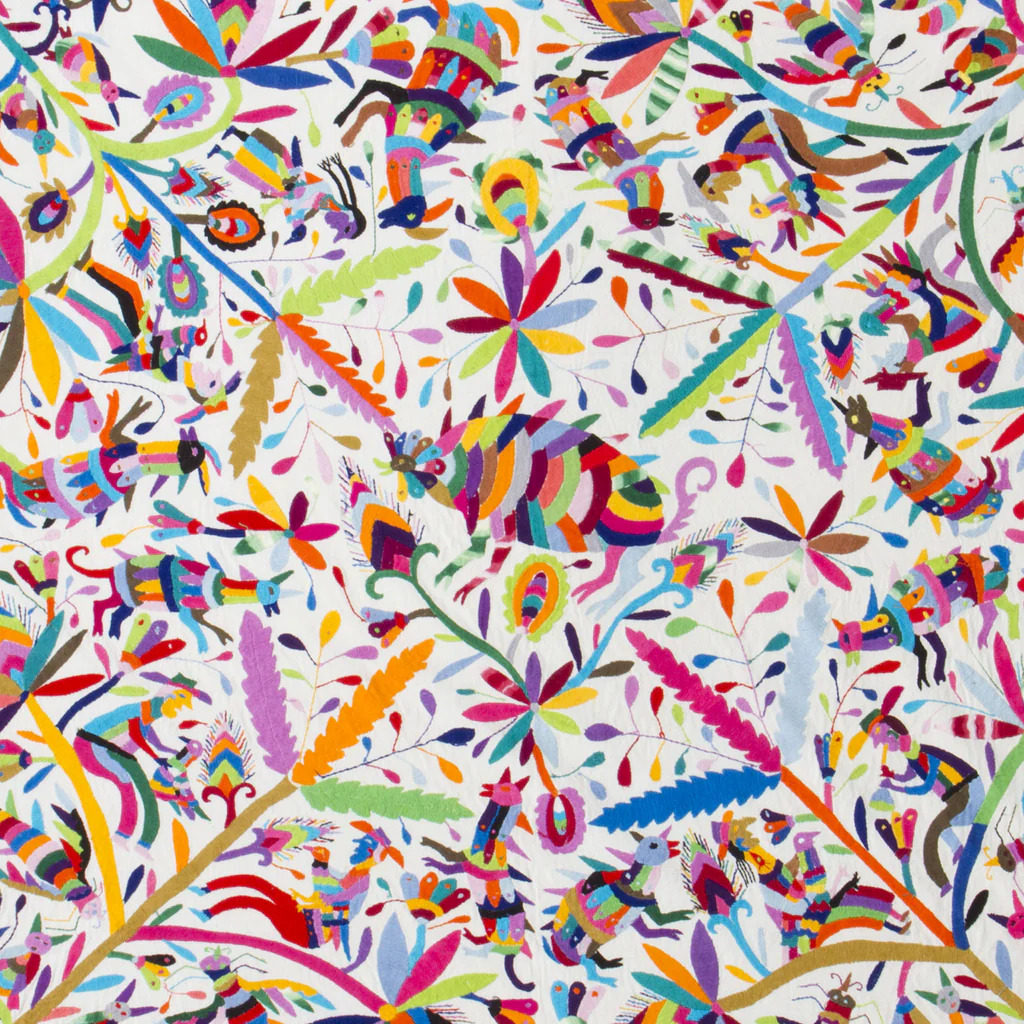
The history of Otomi embroidery is deeply intertwined with the culture and traditions of the Otomi people, who are believed to be the earliest inhabitants of central Mexico. Today they inhabit regions such as Tenango de Doria, Hidalgo, and elsewhere in the altiplano region.
According to legend, Otomi embroidery resulted when local hunters chasing an animal stumbled upon a cave featuring intricate paintings of fantastical animals. The hunters traced the designs on paper and brought them home to their community, where the local women replicated the drawn figures in embroidery. Thus, Otomi was born.
For centuries, Otomi embroidery was a regional craft, predominantly practiced by women and passed down through generations from mother to daughter. However, in the 1960s Otomi embroidery found new audiences when a severe drought in Tenango de Doria forced the Otomi people, who traditionally relied on agriculture, to seek alternative sources of income. They turned to their rich cultural heritage, refining and commercializing their embroidery skills.
The 1960s introduced the world to “tenangos”—vibrant, large-scale embroidered pieces on white fabric. Today, this embroidery style is celebrated worldwide for its bold designs and vibrant colors.
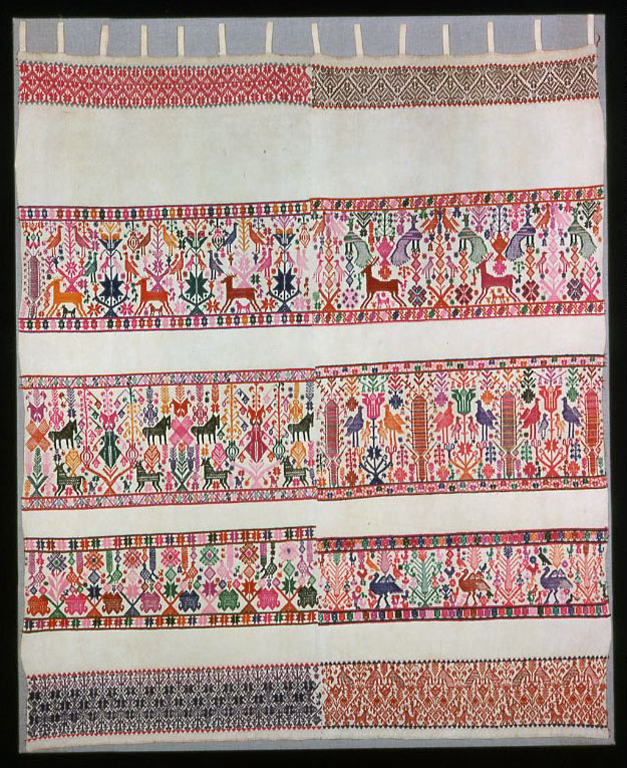
Materials, Techniques, and Stitches: Traditionally, Otomi utilizes a sturdy, white cotton cloth, which serves as a neutral backdrop for the bold, colorful threads. The thread used is typically cotton or wool, selected for its rich colors and ability to create dense, solid areas of embroidery.
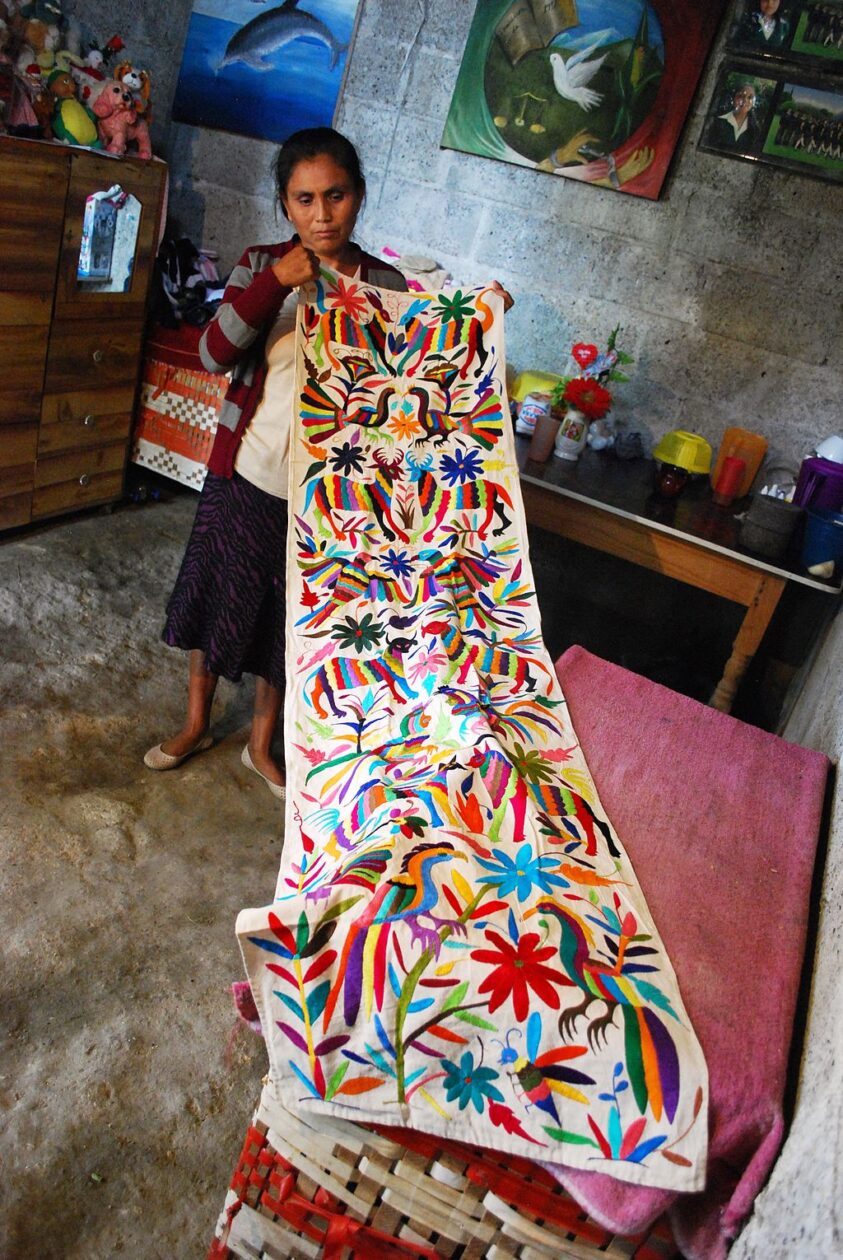
In recent years, as Otomi embroidery has gained popularity, stitchers have employed a broader range of threads. Modern iterations might use synthetic threads or a mix of natural and synthetic fibers, depending on the intended use of the embroidered piece. For instance, common household items like pillowcases, table runners, and bedspreads are often made using a combination of traditional cotton and more durable, machine-washable threads to suit contemporary lifestyles.
Otomi embroiderers will trace or draw a design by hand, then use a modified, narrow herringbone stitch to layer and fill in the stitchwork, working overlapping stitches closely together to create densely stitched areas. Otomi stitches are always worked on the topside of the fabric, making it more economical than other types of stitchwork. Sometimes, a modified satin stitch is used for smaller areas.
Otomi embroidery motifs were inspired by the ancient cave paintings found in the Mexican Altiplano, as well as by Aztec art. Otomi embroidery features abstract, geometric motifs alongside stylized representations of native flora and fauna (armadillos, foxes, fish, deer, squirrels, birds, and roosters are common), mythological animals, and other natural and supernatural symbols, all of which communicate the intricately woven elements of Otomi life. Many Otomi motifs represent myths and stories from the community. Otomi motifs are often symmetrical, and the brightly colored threads against crisp white fabric create a stark, striking contrast that plays with positive and negative space.
Tenango Embroidery. In Wikipedia. https://en.wikipedia.org/wiki/Tenango_embroidery
(n.d.). Meixco Dreams Animals. Casadolores. Retrieved August 20, 2024, from http://www.casadolores.org/mexico-dreams-animals.html
(n.d.). Otomí Embroidery. Otomi Mexico. Retrieved August 20, 2024, from https://www.otomimexico.com/single-post/otomi-embroidery
(2023, November 14). What’s in a Tenango?: Behind the Famous Otomí Embroidery. Lolo Modern Mexican Mercadito. Retrieved August 20, 2024, from https://lolomercadito.com/blogs/news/what-s-in-a-tenango-the-famous-otomi-embroidery
(n.d.). Otomí Embroidery. Edmonton Needlecraft Guild. Retrieved August 20, 2024, from https://www.edmontonneedlecraftguild.org/info/otomi-embroidery
(2020, August 31). Otomi Tenangos – A Rich History of Women and Embroidery. Waldorf Handwork Educators. Retrieved August 20, 2024, from https://www.waldorfhandwork.org/post/otomi-tenangos-a-rich-history-of-women-and-embroidery
(2021, September 2). Tenango Embroidery from Mexico. Selvedge. Retrieved August 20, 2024, from https://www.selvedge.org/blogs/selvedge/tenango-embroidery-from-mexico
(2020, November 23). History of a trend: Otomi embroidery and patterns. Wondrous Paths. Retrieved August 20, 2024, from https://wondrouspaths.com/history-otomi-embroidery-patterns/
(n.d.). Otomi Embroidery. The Craft Atlas. Retrieved August 20, 2024, from https://craftatlas.co/crafts/otomi
